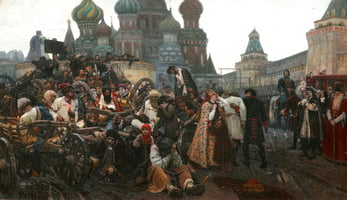Giovanni Boldini (1842 - 1931) was an Italian painter known for his masterful portraits of society...
Unlocking the Mystique of Gustav Klimt: An Exploration of the Life and Works of the Beloved Austrian Painter
Gustav Klimt is a renowned Austrian Symbolist painter whose work is often characterized by its bright colors, intricate patterns, and use of gold leaf. He is best known for his iconic works such as "The Kiss" and "The Tree of Life," which are both widely recognized as masterpieces of modern art. Klimt was born in Baumgarten, Austria in 1862 and studied at the Vienna School of Arts and Crafts.
He quickly embraced the Symbolist movement, which was popular at the time, and developed a unique style that incorporated elements of Byzantine art, Art Nouveau, and Japanese prints. Klimt's paintings often featured motifs of sensuality, which caused controversy in the conservative Viennese art scene. Klimt's most famous paintings are typically divided into two distinct periods, the "golden phase" and the "silver phase." The golden phase, which lasted from the early 1890s to the early 1900s, was characterized by the use of gold leaf, intricate patterns, and the iconic "Klimt Kiss." The silver phase, which lasted from the early 1900s to the early 1920s, was characterized by the use of silver paint, geometric shapes, and more subdued colors.
In addition to his paintings, Klimt was also a skilled draftsman and designer, creating numerous sketches and murals for public and private institutions. He also designed furniture and stained glass windows, and was involved in the design of several Viennese buildings, including the Palais Stoclet and the Secession Building. Gustav Klimt died in Vienna in 1918. His legacy lives on in the many museums and galleries that display his works, as well as in the many inspired by his unique style and approach to art. He is widely considered one of the most influential and important artists of the modern era.




